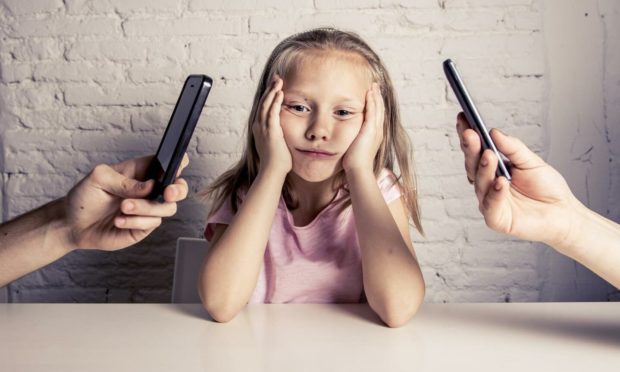It’s great to know there is lots of advice out there about online safety for children.
However, it can be confusing for young people if the adults around them appear not to be following the same guidance they are giving.
There are many online behaviours that we want our children to adopt, such as being kind to others and talking to us about any issues they come across.
As parents and carers, it is good for us to take a step back every so often and think about how we model such behaviours in our own lives. This can help us understand if there is anything else we can do to help keep our children safe online.
Turning off notifications during periods throughout the day can show our children how important is to take a break from the online world, particularly if they feel overwhelmed. This can be done by using the “do not disturb” feature on your phone, or by turning off notifications in device settings.
Discussing and agreeing with our children on a time to do this, particularly in the evening and while having dinner, will give the whole family a much-needed break.
Misinformation and being mindful of what you share
There is a lot of fake news and misinformation online, so it’s helpful to discuss with our children what we are reading. This will help them to understand and to develop skills to think about and question the content they come across.
We also tell our children to be mindful of what they share online, but as parents it’s also important to consider what we are sharing.
Talking to our children to remind them that passwords are private and should not be shared is important, but we should lead by example
For example, we might tell kids not to share pictures of themselves in their school uniforms, but at the start of every school year many parents do just this. This presents an opportunity to discuss how sharing can be done safely, such as with privacy settings and in small networks on social media.
Do we keep our own passwords safe? Talking to our children to remind them that passwords are private and should not be shared is important, but we should lead by example and also show them that we act this way ourselves.
More tips and advice about online safety is available on net-aware.org.uk.
Anyone with any concerns about the welfare of a child can contact the NSPCC’s confidential helpline on 0808 800 5000 or at nspcc.org.uk for advice. Children can contact Childline on 0800 1111 or at childline.org.uk.
Carla Malseed is an NSPCC Scotland campaigns manager


